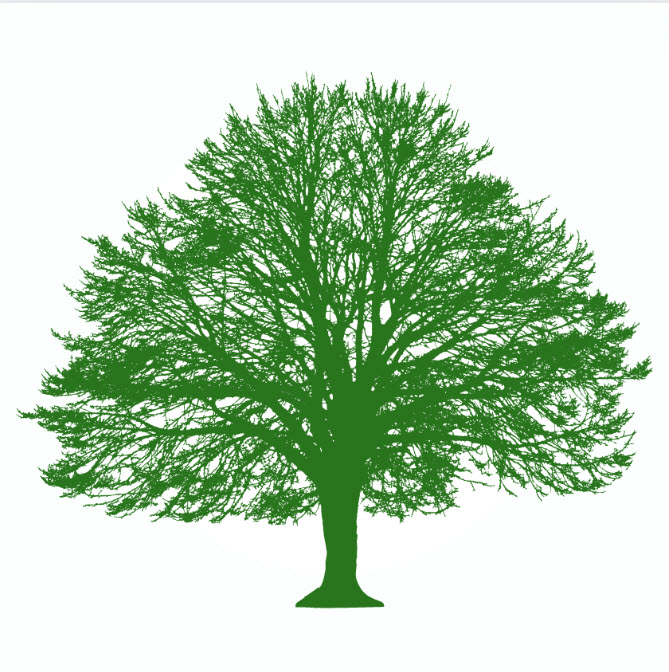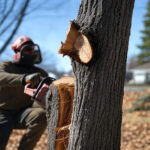Storm Damage
Trees are essential components of both urban and rural environments, providing shade, shelter, aesthetic appeal, and even enhancing property values. However, during extreme weather conditions, trees can become liabilities. From high winds to torrential rains, thunderstorms, and ice storms, adverse weather conditions can cause significant damage to trees, leading to hazardous situations. In response to this, tree services play a critical role in maintaining the health of trees, managing damage, and ensuring the safety of properties and the people living around them.
The Importance of Tree Maintenance
Tree maintenance is often underestimated by homeowners and property managers. Regular care, such as pruning, trimming, and inspection, ensures that trees remain healthy, well-balanced, and less prone to weather-related damage. Preventative tree care can help detect structural weaknesses, diseases, and other issues that might be exacerbated by storms. Well-maintained trees are more resilient to environmental stresses like high winds and heavy rains.
Professional tree services offer these maintenance tasks, using specialized equipment and expertise to assess the overall condition of trees. This proactive approach prevents many hazards that arise during storms. Deadwood removal, crown thinning, and ensuring proper root development can save trees from severe damage or falling during inclement weather.
Types of Storm Damage to Trees
Different types of storms have varying effects on trees, each presenting unique challenges:
Wind Damage: Wind is one of the primary causes of storm-related tree damage. High-speed winds can break branches, uproot trees, and even cause seemingly healthy trees to snap. Trees with shallow root systems, dense canopies, or existing structural defects are most susceptible to wind damage. Tornadoes and hurricanes exacerbate the impact by uprooting even well-rooted trees.
Rain and Flooding: Prolonged periods of heavy rainfall can saturate the soil, weakening a tree’s root system. Over time, this can cause trees to lean or fall entirely, especially in areas where drainage is poor. Furthermore, flooding can suffocate tree roots, depriving them of oxygen, leading to long-term health issues or death.
Lightning Strikes: Trees are natural conductors for lightning strikes due to their height. When struck, the sap inside the tree heats up and expands rapidly, causing the bark to split or explode outward. While the tree may not always die immediately, a lightning strike leaves it vulnerable to diseases and decay, compromising its structural integrity over time.
Ice and Snow: In colder regions, ice storms and heavy snowfall can weigh down tree branches, causing them to break or snap under the pressure. Trees with brittle wood or dense canopies are particularly vulnerable. Even small branches breaking off can create hazardous situations, especially if they fall onto power lines, homes, or vehicles.
The Role of Emergency Tree Services
Storms often strike suddenly, leaving little time for preparation. When a tree is damaged or becomes hazardous due to weather, immediate action is required to mitigate risks. Emergency tree services are essential in these scenarios. They respond promptly to dangerous situations, such as when a tree has fallen on a home or road, and ensure that the area is made safe as quickly as possible.
Emergency tree services typically include:
- Tree Removal: When a tree is severely damaged or poses an imminent threat to property or people, removal may be the only option. Certified arborists use advanced techniques to safely remove trees without causing further damage.
- Debris Cleanup: After storms, yards, roads, and properties may be littered with fallen branches, leaves, and other tree debris. Tree service companies offer cleanup services to restore order and prevent additional hazards.
- Cabling and Bracing: In some cases, trees may not need to be removed entirely. If a tree is partially damaged but salvageable, professionals may use cabling or bracing techniques to support weakened limbs or trunks, ensuring they remain stable and can heal over time.
Assessing Storm Damage: The Arborist’s Role
A crucial part of post-storm tree care involves a thorough assessment by certified arborists. These professionals are trained to evaluate the extent of damage and recommend appropriate actions. An arborist can identify whether a tree is likely to survive after storm damage, needs immediate removal, or requires other interventions such as trimming or disease treatment.
Arborists also play a preventive role, advising on how to prepare trees for future storms. For instance, they may recommend pruning to reduce wind resistance or fertilization to boost root health.
Insurance and Tree Damage
One of the most stressful aspects of storm-related tree damage for property owners is navigating insurance claims. Depending on the policy, homeowners’ insurance may cover the cost of tree removal and property repair, particularly when trees fall on homes, cars, or power lines. However, policies vary, and it’s essential to understand what coverage you have before storm season arrives.
Most insurance providers cover the removal of trees that have fallen due to storms, but they may not cover the removal of trees that are still standing, even if they pose a future threat. It is vital to consult with both your insurance company and a tree service professional after a storm to assess the best course of action.
Tree Health and Recovery After a Storm
Not all trees that experience storm damage need to be removed. Some trees can recover with proper care and time. Here are some common recovery techniques:
- Pruning: Removing broken or damaged limbs helps trees heal and prevents diseases from entering through exposed wounds. Professional pruning ensures that the tree’s shape is maintained, reducing future risks.
- Fertilization and Mulching: Trees that have experienced root damage or nutrient loss due to flooding can benefit from fertilization and mulching. This helps restore lost nutrients and encourages healthy root regrowth.
- Pest and Disease Control: Trees weakened by storms are more susceptible to pests and diseases. Regular monitoring and treatment can prevent further decline.
- Long-term Monitoring: It is essential to monitor storm-damaged trees over the long term. Sometimes damage, especially to the root system, may not be immediately visible but can affect the tree months or even years later.
Future-Proofing Trees Against Weather Events
While it’s impossible to prevent all storm damage, proactive steps can significantly reduce the risks. Some preventive measures include:
- Tree Selection: Choosing the right species for your area is critical. Native species tend to be more resilient to local weather conditions. Consulting with an arborist can help you select trees that are less likely to suffer from wind damage, disease, or breakage.
- Planting Location: The location where a tree is planted plays a significant role in its survival during storms. Trees planted too close to buildings, power lines, or roads can become hazardous during severe weather.
- Routine Care: Regular inspections, pruning, and care will ensure that trees remain healthy and better equipped to withstand harsh conditions. This includes checking for structural weaknesses, disease symptoms, and ensuring the tree’s root system is well-developed.
Storms and other severe weather events can significantly impact trees, creating dangerous situations that require immediate attention. Tree services are invaluable for both preventative care and emergency responses, helping maintain the health of trees and ensure safety in the aftermath of storms. Professional arborists play a crucial role in assessing damage, providing care, and preventing future issues. By investing in regular tree maintenance and understanding how to respond after storms, property owners can protect both their landscapes and their homes from the unpredictable forces of nature.


